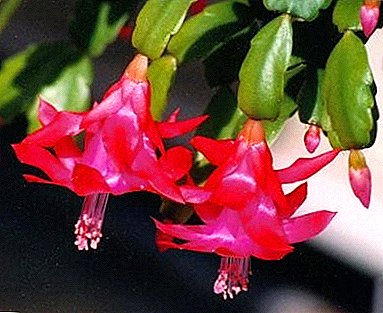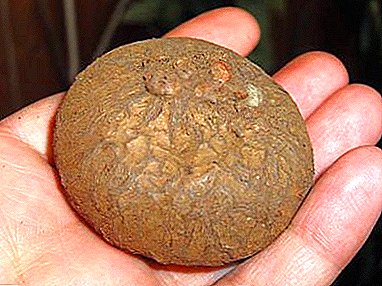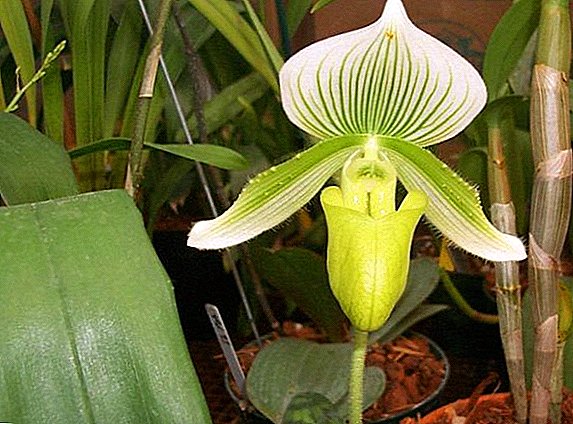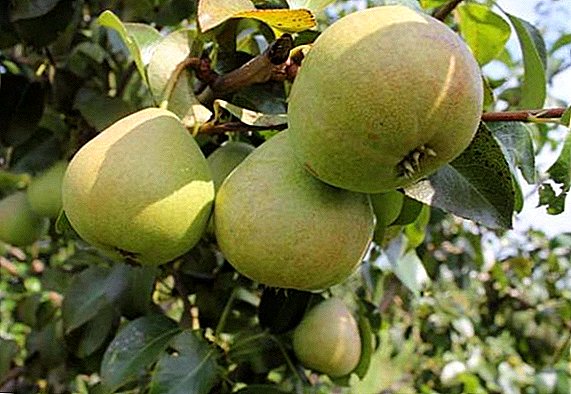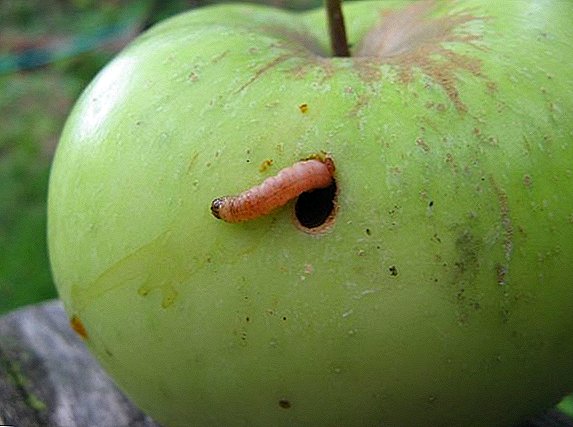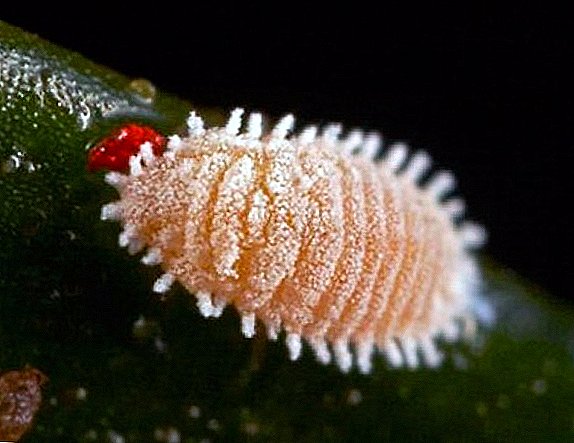 Mealybug - an insect that can live only with the help of another living organism. Parasitizing on one victim, the scarlet immediately finds the next. It was once used to produce red paint, but now it is known as the largest parasite in scale.
Mealybug - an insect that can live only with the help of another living organism. Parasitizing on one victim, the scarlet immediately finds the next. It was once used to produce red paint, but now it is known as the largest parasite in scale.
What does the parasite look like
Science knows more than 2,200 species of mealybug family. On its oval body, it has a white wax, resembling flour from afar. That is why this name is given. Males of the family are usually larger than females. The average size of a mealybug is up to 6-8 mm (like a larva of a ladybug). Although its size is small, it can be found in the early stages of plant disease. 
Important! This insect can breed on greenhouse plants (tomatoes, cucumbers, etc.)
What is dangerous and where does it come from
A mealybug is comparable to a time bomb for flowers. It is dangerous because the plant is easily infected and quickly dies. The latter is due to the fact that the insect simply sucks the juice. The pest can be located both in the root system and in the leaf axils. Let us examine in more detail where the mealybug is taken.
So, mealybug can be found anywhere in the world. They multiply quickly. The female can lay up to 400 eggs at a time. On plants, they appear for various reasons.
For example, you yourself could bring it on clothes, of course, if you contacted an infected plant. At the same time, the option that the pests arrived themselves was excluded: the insects belong to the order of the half-winged, whose wings are poorly developed. And female individuals are wingless.
Did you know? In sexually mature males, the oral organ is depleted and loses its functionality.

Signs of plant damage
Of course, the mealybug is dangerous, but you need to know how to deal with it on houseplants. Initially, it is necessary to determine if there is an infection on the leaves, root system or shoots.
The first sign can be called the fall of the leaves or their quick drying. For example, mealybug on cacti causes yellowing of the stem itself. 
Did you know? There is a separate mealybug subspecies, which parasitizes only pineapples.Often it is impossible to notice the infection in the early stages. With the defeat of the sheets will be white scurf in the form of a cobweb - you can remove it and crush with your fingertips. In this way, you will understand whether there are already larvae and how many adults. Such a worm nest occurs in several places on a plant if it is severely affected.
 Another sign may be a cessation of growth. The mouth organ of the mealybug is piercing-sucking. It is with the help of a proboscis that he takes all the vital elements from the plant.
Another sign may be a cessation of growth. The mouth organ of the mealybug is piercing-sucking. It is with the help of a proboscis that he takes all the vital elements from the plant.In rare cases, modified flowers indicate an infection.
Risk group
Any plant can be attacked by a parasite.
Houseplants also suffer from nematodes, spider mites and whiteflies.
The mealybug in dracaena is dangerous for one reason: the insect easily lays its eggs in places where the leaves come into contact with the stem. During treatment, you may simply not notice this fact, and all methods of struggle will be in vain. Therefore, carefully inspect the plant.
The parasite loves to eat from the roots - the root system. Therefore, mealybug in violets is often there. 
Preventive actions
In order not to deal with the problem in the later stages, when the plant is about to wither, preventive measures are necessary. To prevent the appearance of the parasite will help elementary inspection. If you do it regularly, it will not be necessary to use chemicals for treatment.
This option is also possible: they noticed an infection at the initial stage during transplantation. Then sterilize the pot. Then treat the whole plant with a liquid prepared from calendula and water (100 g of grass per 1 l of water). If the insect does not touch the roots, then wash the leaves and stem with soapy water. 
Active control measures
The mealybug on the orchid leads to the modification of the shoots: if the infection occurred in the early stages of development, you must immediately understand how to get rid of the problem correctly.
There are two options: insecticides or folk remedies. The first will help get rid of the problem in a short time. The latter will be safe.
Chemicals
Insecticides are considered effective due to their chemical action on larvae. After all, removing an adult, you get rid of half the problem. The main thing is to remove the larvae.
Any insecticide is suitable for the fight against the parasite. Among the famous "Aktara", "Confidor Maxi", "Fitoverm", "Calypso", "Confidant". All preparations have instructions for use.
Important! Chemical processing is necessary 4 times a month. One week - once. Watering clear in a week. After that, the plant has a high chance of recovery.
Folk remedies
Insecticides can be expensive. Come to the aid of popular recipes to combat the parasite.
- Garlic solution. You will need 1 head of garlic and 1-1.5 liters of boiling water. Chopped garlic is poured boiling water and infused for several hours. The plant must be wiped with a solution.
- Soap + alcohol. Any kind of soap is diluted with ethyl alcohol in water. The ratio is 1: 1: 1. The main thing - to avoid falling on the substrate. The next day, carefully wipe the plant from the solution.
- Citruses. Any citrus fruit is useful for fighting insects. Zest is filled with boiling water, there are no strict restrictions in proportions. Allow the composition to cool and spray. Plus method in a pleasant smell.
Although the mealybug lives quietly and for a long time on domestic plants, many are puzzled by the problem of whether the parasite is dangerous for humans. No, it is not dangerous, but even useful - in fact, some species of its family are used for production purposes.
Timely care and disease prevention will increase the chances that the insect will not appear. But even if such a situation has occurred, it is worthwhile to assess the damage as soon as possible and take the above described methods of struggle.


